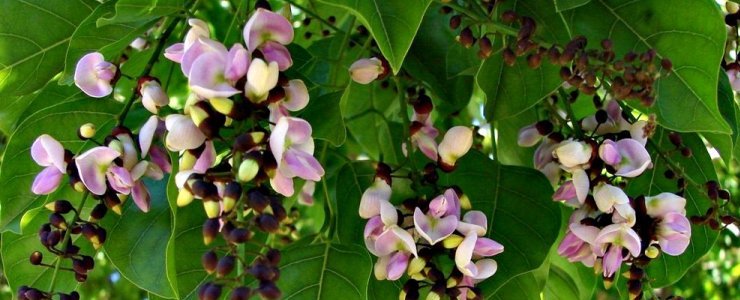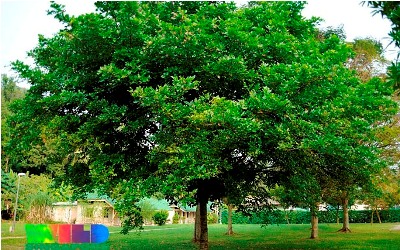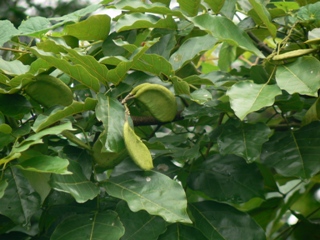
History
Adaptation
Through centuries of natural challenges, the Pongam tree has adapted to continue living. One adaptation this plant has made is the development of a lateral root network to stay rooted in areas with extreme soil erosion. These trees have also adapted themselves to need very little water to survive. This makes the drought resistant. Also, their thick trunk and branches help them withstand extreme wind gusts. Finally, P. pinnata is very tolerant of high salinity which makes it able to grow near a variety of bodies of water.
| Move on to learn
about the Pongamia Botanical Description & Life Cycle. Go to the Pongamia pinnata Homepage. |
 Photo taken by Ria Tan |
